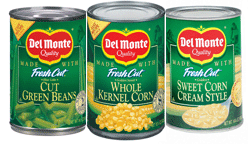Here are some ideas to keep in mind next morning you find yourself looking for a delicious jump-start to your day:
Make your own yogurt parfait. Get a glass or bowl, add some low-fat yogurt, add granola (recipe to make your own below), put on your favorite fruit (bananas, sliced strawberries, berries, dried fruits), even top with nuts and honey.
Cook up an omelet. Add chopped peppers, onions, tomatoes, mushrooms, basil-- or create a breakfast sandwich by putting it between a piece of whole grain bread and a slice of low fat cheese
Instant oatmeal. Quick and easy to prepare, and it tastes good when you add berries, dried fruit, nuts, and honey!
Breakfast Sandwiches. These can be creative and good for on-the-go. Start with a whole grain tortilla and add low-fat cream cheese with fruit, peanut butter and banana slices, or a scrambled egg with peppers and vegetables.
Fruit smoothies. A refreshing and nutritious way satisfy hunger on the go, adding vitamins and fiber to your day. Blend fruit (frozen fruit can work here too!), ice, milk, yoguryjuice, Try out different combinations, like blueberry and peach, mango and strawberry, orange and papaya) to find your favorite combo.
Granola. A great on-the-go snack to keep on hand, mix with dried fruits, topped on yogurt, added to cereal, or eaten alone for a sweet treat. Start by preheating the oven to 325 degrees, and in a large bowl, combine 3.5 cups old fashioned rolled oats, along with 1/4 cup chopped pecans, 1/4 cup chopped almonds, 1/4 cup chopped walnuts (or any other kind of nuts you want to add) along with 1/4 teaspoon salt, 5 teaspoons vegetable oil, 5 tablespoons maple syrup, and 1/2 teaspoon vanilla extract. Mix together, spread mixture on a baking sheet and bake for 25-30, or, until golden brown.(Makes 4 cups; stores for up to 2 weeks at room temperature)
...and don’t forget to check out the websites below for additional breakfast recipes!
Resources:
http://www.livestrong.com/article/240595-ideas-for-a-healthy-breakfast-menu/
http://www.livestrong.com/article/291726-10-healthy-breakfast-ideas/
http://www.livestrong.com/article/337649-healthy-breakfast-fruit-smoothies/
http://www.cookinglight.com/food/quick-healthy/quick-breakfast-recipes-00412000070253/
Healthy Eatings!
-Anth249 H







